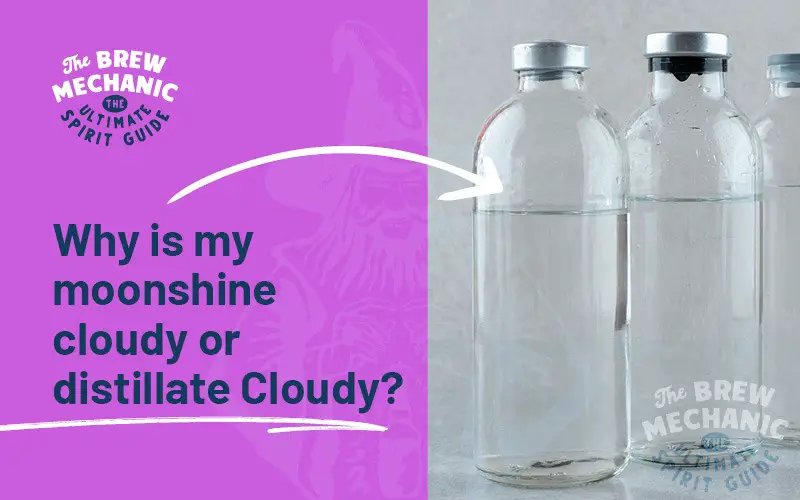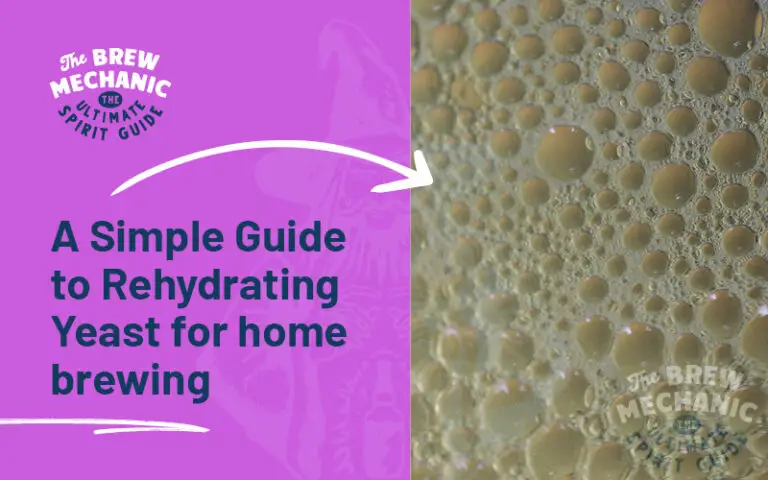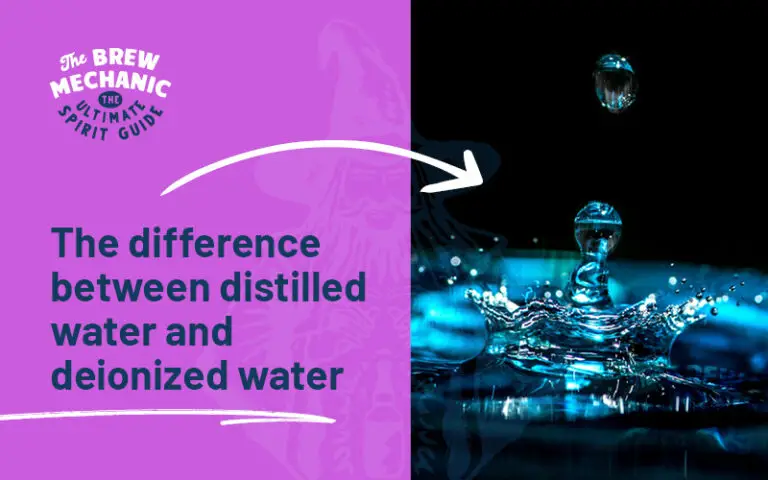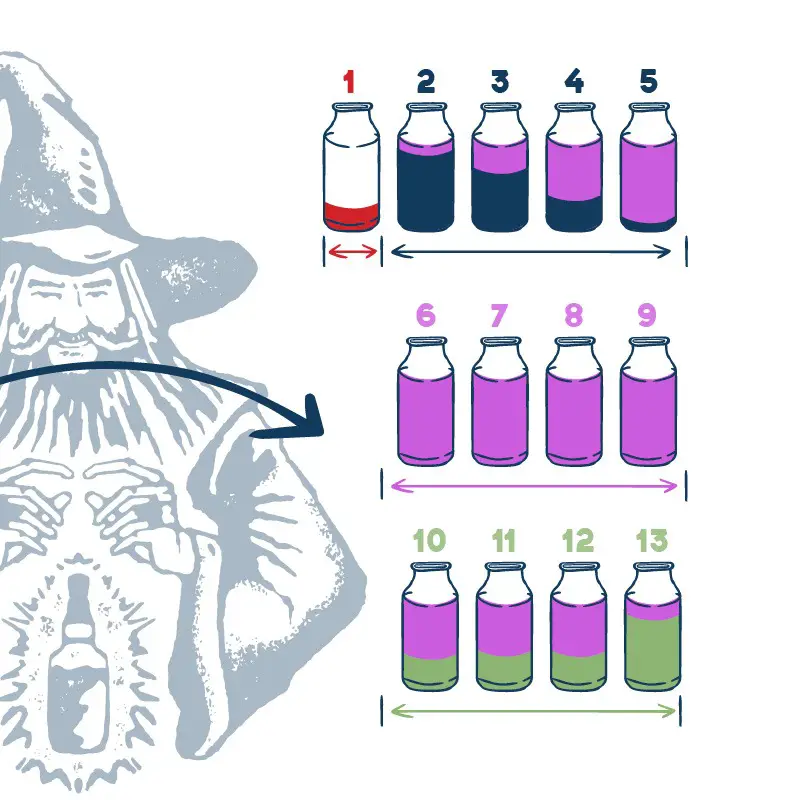Why is my moonshine cloudy or distillate Cloudy?

One common issue that distillers encounter is a cloudy distillate. You may ask yourself why is my moonshine cloudy (or distillate cloudy)? Yes it can be frustrating, but understanding the causes can help you rectify the problem and prevent it from happening again.
Here are the common problems that cause cloudy moonshine or distillate.
We go into the details below for each.
Greediness and Fusil Oils lead to cloudy distillate
One of the primary reasons your distillate might be cloudy is the presence of fusil oils. Fusil oils are higher alcohols produced during fermentation. They are often the result of being too ‘greedy’ with your cuts during the distillation process. This means you’ve likely collected too much of the ‘heads’ and ‘tails’ where these oils are present. These cuts should be carefully separated from the ‘hearts,’ which is the desired part of the final product.
Foreshots And Heads – Temperature range 56 > 77.5°C (132.8 > 171.5°F) = Discard this alcohol
Tails – Temperature ranges from 82°C (179.6°F) = Can be discarded or added to the next batch
| Acetone – Foreshots | 56.6°C or 133.8°F |
| Methanol – Foreshots | 64°C or 147.2°F |
| Ethyl Acetate – Heads | 77.1°C or 170.8°F |
| Ethanol Range – Hearts | 78.3 > 81.5°C or 172.9 > 178.7°F |
| 2 Proponal – Tails | 82°C or 179.6°F |
| 1 Proponal – Tails | 97°C or 206.6°F |
| Fuesel oils – Tails | 94 > 95°C or 201.2 > 203°F |
Download our Distilling Cuts Chart here
Yes I want this epic PDF plus get tips and tricks! You will be joining our distilling mail list. 🙂
Inadequate Degassing
Another common issue is not degassing the fermented solution adequately before adding a flocculent, which helps to clarify the solution. Degassing is the process of removing dissolved gases from the liquid, which can be done by stirring or agitating the solution. If not done properly, the residual gases can cause cloudiness.
Incomplete Fermentation or Flocculation
If your wash hasn’t fully fermented, it can result in a cloudy distillate. Incomplete fermentation means that not all sugars have been converted into alcohol, leaving behind compounds that can cloud your distillate. Similarly, insufficient flocculation – the process of clarifying the wash by causing particles to clump together and settle – can also be a culprit.
Nutrient Imbalance
An imbalance of nutrients in your wash can affect the fermentation process. Yeast requires a balanced diet to function effectively. An imbalance, particularly a deficiency in certain nutrients, can lead to incomplete fermentation and the production of undesirable compounds that cloud the distillate.
Activated Charcoal Filtration
A practical solution to a cloudy distillate is filtering it through an activated charcoal filter. Activated charcoal is excellent at absorbing impurities, including fusil oils and other compounds that can cause cloudiness. This method is often effective in clearing up the distillate. If you are unsure, you will need to redistill the cloudy spirit back into the next batch.
Re-distillation if filtering doesn’t clear
If filtering doesn’t clear the cloudiness, you might need to redistill the batch. This involves running the cloudy distillate through the still again. This process can help to further separate the desirable components from the impurities that are causing the cloudiness.
Puking in the Still
Puking refers to the boiling over of the wash into the distillate. This usually happens if there’s too little anti-foam agent used. The presence of wash in the distillate will undoubtedly lead to cloudiness. This can also introduce solids and other impurities, which can affect both the clarity and the taste of the distillate.
Sludge and Heating Issues
Finally, transferring too much sludge into the kettle or improper heating can result in a cloudy distillate. The sludge, which is the sediment that settles at the bottom of the fermentation vessel, can contain solids that cloud the distillate. Additionally, excessive or uneven heating can cause some of these solids to burn and mix with the distillate, leading to cloudiness and off-flavors.
Be careful if you ask the question… Why is my moonshine cloudy?
A cloudy distillate can be a sign of several issues, from greediness in the distillation cuts to inadequate preparation of the wash. Understanding these potential problems is crucial in troubleshooting and preventing them in the future.
Regular monitoring, careful preparation, and precise control during the distillation process are key to achieving a clear and high-quality spirit. Remember, distilling is as much about patience and precision as it is about the passion for crafting exceptional spirits.
Last Updated on Dec 7, 2023 by The Brew Mechanic
Disclosure: I may receive affiliate compensation for some of the links below at no cost to you if you decide to purchase a product or service. You can read our affiliate disclosure in our privacy policy. The information provided is for entertainment only.

With 35 years of knowledge of being a chemical engineer in alcohol manufacturing plants, my mission is to teach the next generation of home distilling alcohol brewers at a supernatural speed.
My reviews are based on real-life experiences with reflux stills, sugar wash, troubleshooting and mystical chemical reactions.







